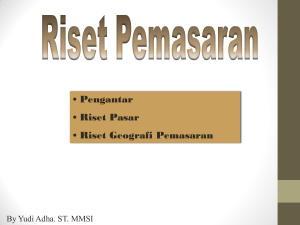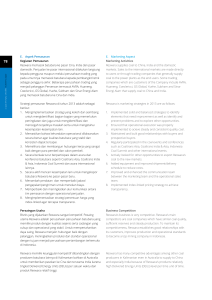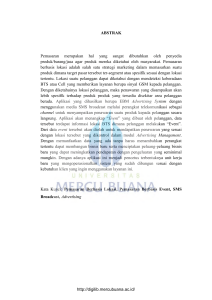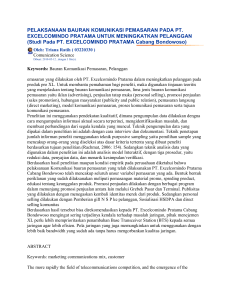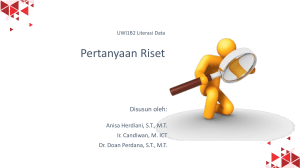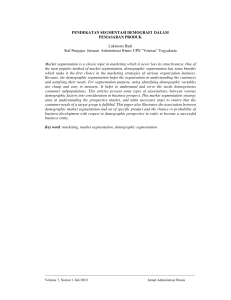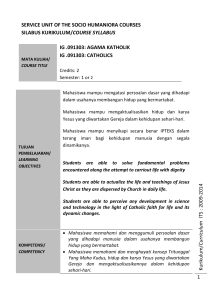Pengantar Riset Pemasaran
advertisement
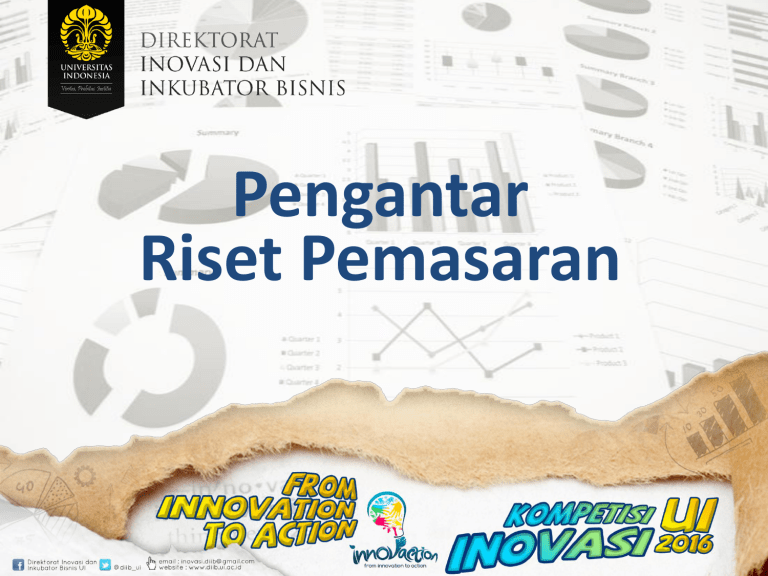
Pengantar Riset Pemasaran Definisi Pemasaran Pemasaran adalah suatu proses sosial dimana ada kelompok masyarakat ataupun individu ingin memenuhi kebutuhan dan keinginannya melalui suatu kegiatan menciptakan, menawarkan dan mempertukarkan secara bebas produk ataupun jasa yang bernilai dengan pihak lain - Philip Kotler (p. 7) Proses Manajemen Pemasaran Needs, wants and demands Marketing Products Value, cost and satisfaction Exchange, transactionand relationship Market Needs, Wants, and Demands • Needs menggambarkan kebutuhan dasar manusia seperti pangan, sandang, papan, pendidikan, kesehatan, rekreasi, dll • Needs menjadi wants jika kebutuhan telah menjadi satu keinginan yang tertentu yang dapat memberikan kepuasan. • Demands adalah wants (keinginan-keinginan) terhadap produk/jasa yang spesifik dan didukung oleh ketersediaan dana untuk membayar. Konsep Pemasaran Total Company Effort Customer Satisfaction The Marketing Concept Effort Total company effort: Total usaha perusahaan Profit Customer Satisfaction: Kepuasan Pelanggan Rencana Analisa global Analisa lokal Analisa jenis usaha Rencana dan Strategi Pemasaran Berhasil/Sukses Strategi Taktik Segmentas i Nilai Targeting Diferensiasi Positioning Marketing Mix Analisa SWOT Merk Pelayanan Selling Tujuan Usaha Manajemen Peran Riset Pemasaran dalam Rencana dan Strategi Pemasaran • “Masyarakat senantiasa mengharapkan ide-ide, temuan baru atau inovasi dari pengusaha, perusahaan ataupun lembaga lainnya yang menawarkan produk/jasa melalui suatu proses penelitian dan pengembangan teknologi” (International Small Business Congress, 2000) Ciptakan ide-ide Pilih ide-ide No Go No Go Uji dan Pengembangan Konsep RISET No Go Pengembangan & Strategi Pemasaran Analisis Bisnis Pengembangan Produk Tes Pasar No Go No Go Komersialisasi Riset Pasar • Menurut Maholtra dalam American Marketing Association (AMA) mengatakan bahwa riset pemasaran adalah identifikasi, pengumpulan, analisis, dan penyebaran (pembagian) informasi yang sistematis dan objektif untuk meningkatkan pengambilan keputusan yang berhubungan dengan identifikasi dan solusi masalah-masalah dan kesempatan-kesempatan dalam pemasaran. • Hasil dari riset pasar akan menghubungkan antara pemasar dengan konsumen dengan cara menyediakan informasi penting yang dapat digunakan untuk menyelesaikan masalah terkait pemasaran serta membantu dalam pengambilan keputusan pemasaran. • Riset pasar dapat membantu perusahaan untuk menciptakan serta mengembangkan produk yang mutakhir serta sesuai dengan kebutuhan konsumen. Klasifikasi Riset Pasar The Market Research Process 1. Defining the problem and objectives Steps Distinguish between the research type needed e.g. - exploratory - descriptive - causal Comments If a problem is vaguely defined, the results can have little bearing on the key issues 2. Developing the research plan Decide on - budget - data sources - research approaches - research instruments - sampling plan - contact methods The plan needs to be decided upfront but flexible enough to incorporate changes/ iterations 3. Collecting the information 4. Analysing the information 5. Presenting the findings Information is collected according to the plan (N.B. it is often done by external firms) Statistical manipulation of the data collected (e.g. regression) or subjective analysis of focus groups Overall conclusions to be presented rather than overwhelming statistical methodologies This phase is the most costly and the most liable to error Significant difference in type of analysis according to whether market research is quantitative or qualitative Can take various forms: - oral presentation - written conclusions supported by analysis - data tables Primary research Primary research involves finding out new, first-hand information. This is called primary data. Methods of primary research include: • Questionnaires • Focus groups • Observation Primary research Benefits Drawbacks • Directly relevant to the business • Time consuming • Often expensive • Up-to-date data obtained • Competitors do not have access to the findings • Results may be misleading if the sample size is too small, questions are unclear or there is interviewer bias Quantitative research • Quantitative market research involves finding numerical data • Quantitative data is generally collected from large samples and is easy to analyse • Methods of collecting quantitative data include written and online questionnaires • Qualitative research involves finding out opinions, attitudes and feelings • Often more useful than quantitative data but is more difficult to collect and analyse • Methods of collecting qualitative data include focus groups & in-depth interviews Sampling Sampling is the method of choosing a smaller, representative group of respondents with which to conduct research instead of the whole population. Sampling reduces the cost and time to carry out research. Careful sampling can provide reliable data about the population. Sampling methods Random sampling Everyone in the population has an equal chance of being chosen to be in the sample. Quota sampling People in the sample are chosen to reflect the proportions of different groups in the target market e.g. 80% over 60s, 20% under 60s when researching the market for mobility aids. Stratified sampling The appropriate market segment is first selected, for example, married men, then the sample is randomly selected from this segment. Reliability of sampling The larger the sample size, the more reliable it is likely to be. However, larger samples incur greater costs. A 95% confidence level is usually expected when conducting research. This means that findings are likely to be correct 19 times out of 20. Statistical Tools • • • • Unlikely you will use most of these techniques; list presented below for your general knowledge Other modules on Wiley web site (companion site) offer interactive exercises Statistical tools: Multiple Regression: Estimating “best fitting” equation showing how value of dependent variable varies with changing values in number of independent variables – Example: Estimate how unit sales are influenced by ad expenditures, price and competitors moves • Discriminant Analysis: Classifying persons into two or more categories – Example: Reveal variables that discriminate between loyal and non-loyal customers • Conjoint Analysis: Ranking of preferences for different offers to identify relative importance of attributes to customers – Example: Identify most important attributes (price, warranty, service and brand) and tradeoffs involved for end-users of a laptop computer manufacturer Statistical Tools (Cont’d) • Cluster Analysis: Separate data into specified number of mutually exclusive groups such that groups are homogeneous on chosen factors – Example: Create five different types of technology consumers based upon purchasing behavior and recency of purchase relative to product release date; categories may be “earlier adopters,” or “laggards” etc. • Multidimensional Scaling: Produce “perceptual maps” of competitive products or brands to measure how they stack up among each other – Example: Find out how a particular brand is perceived versus other brands on “trust,” “reliability,” and “quality” Defining Market Opportunity, Market Segment And Target Market THE FIVE STEPS TO ANALYZING MARKET OPPORTUNITY • 1. Identify the business environmental forces. – – – – – • 2. Describe the industry and its outlook. – – – – – • Economic conditions and trends Legal and regulatory situations and trends Technological positioning and trends (state of the art; related R&D) Relevant social changes Natural environment (shortages ? vulnerabilities ?) Type of industry Size -now and in 3-5 years Types of marketing practices Major trends Implications for opportunity 3. Analyze the key competitors – – – – – – Product description Market positioning (relative strength and weaknesses, as seen by customers) Market practices: channels, pricing, promotion, service Estimated market share (if relevant) Reactions to competition Implications for opportunity THE FIVE STEPS TO ANALYZING MARKET OPPORTUNITY • 4. Create a target market profile. – – – – – – – – – • Levels: generic needs, product type, specific brands End-user focus; also channel members Targeted customer profiles Who are my potential customers ? What are they like as consumers/businesspeople How do they decide to buy / not buy ? Importance of different product attributes ? What outside influences affect buying decisions? Implications for opportunity ? 5. Set sales projections – – – As many formal or intuitive approaches as possible Comparison of results Go/ no go Segmentasi Pasar Suatu proses membagi pasar ke dalam sekelompok pelangan yang memiliki perilaku yang sama atau memiliki kebutuhan yang serupa. Dasar segmentasi yaitu faktor-faktor yang mempengaruhi tuntutan atau respon pelanggan yang berbeda Monitor Environmental Forces • • • • • • Demographic Economic Natural Technological Political/Legal Sociocultural Why We Segment Segmentation offers 3 principal benefits: 1. IDs opportunities for new product development. 2. Assists in development of effective marketing programs. 3. Improves allocation of limited marketing resources. Market Segmentation • Identify distinct groups of buyers who might require separate products and/or marketing mixes. • Profile these buyers: – – – – – – Who are they? What do they want to buy? How do they want to buy? When do they want to buy? Where do they want to buy? Why do they want to buy? Market Targeting Sellers • distinguish major market segments, • target 1 or more, and • develop products & • marketing programs tailored to each segment. Levels of Market Segmentation Mass Marketing Seller engages in mass production, mass distribution, and mass promotion of one product for all buyers. • Creates largest potential market • Leads to lowest costs • Leads to lower prices or higher margins • Proliferation of advertising media and distribution channels make it difficult Levels of Market Segmentation Multi-Segment Marketing Seller recognizes that buyers differ in their wants, purchasing power, geographic locations, buying attitudes & buying habits. Major segments are identified & products and marketing mixes developed for each. • Product offer & prices can be fine-tuned • Choice of Dist./Promo. channels easier Levels of Market Segmentation Sequential Segmentation Businesses may lack sufficient resources to pursue several attractive market segments. • Tackle most attractive segment first. • Using profits earned from this segment, then target the next most attractive segment. • Runs the risk of allowing potential competitors into a market. Levels of Market Segmentation Niche Marketing • Niche customers have a distinct and complete set of needs. • They will pay a price premium to have their special needs met. • The niche is not likely to attract very many competitors. • Should have sufficient size, profit, and growth potential. Levels of Market Segmentation Local Marketing Marketing programs tailored to needs & wants of local customer groups. • Pronounced regional differences often exist in communities’ demographics and lifestyles. • Local marketing can drive up manufacturing & marketing costs by reducing economies of scale. Levels of Market Segmentation Individual Marketing The ultimate level of segmentation. Each customer is a “segment of one.” Self-Marketing Form of individual marketing. Customer takes more responsibility in determining which products/brands to buy Much less reliance upon sales people. Useful Market Segments Are: Measurable Size, purchasing power, & characteristics Substantial Large & profitable enough to serve Accessible Can reach w/ distribution & promotion channels Differentiable Managerially-significant from other segments Actionable Can effectively attract & serve segment Common Bases for Segmentation Consumer Markets • Geographic • Demographic • Psychographic • Behavioral Business Markets •Demographic •Operating variables •Purchasing approaches •Situational factors •Personal characteristics Needs-Based Market Segmentation • First, group customers with like needs, and • Then discover which demographics, lifestyle forces, and usage behaviors make them distinct from customers with different needs. • Primary Benefit – Segments are created around specific customer needs. • Primary Disadvantage – Do not know (initially) who these customers are. Forces That Shape Needs: Consumer Markets Demographics Lifestyles Usage Age Attitudes Quantity Income Values Time of Use Marital Status Activities Personal Household Interests Social Education Opinions Gift Occupation Political Orient. Frequency Forces That Shape Needs: Business Markets Firmographics Company Culture Usage # of employees Bus. Sophistication Quantity Sales Volume Growth Orient. Application # of locations Innovativeness Time of Purch. Years in business Technology Experience Industry Centralized Decision Making Users Finances Frequency Positioning Designing an offering & image in order to occupy a meaningful & distinct competitive position in the target customers’ minds. Positioning & Differentiation • The main focus of positioning is differentiation. • Differentiation involves designing a set of meaningful differences to distinguish the company’s offering from competitors’ offerings. The 5 Differentiation Dimensions • Product • Services • Personnel • Channel • Image Product Differentiation Variables • Features – Characteristics that supplement the product’s basic function. • Performance Quality – The level at which the product’s primary characteristics operate. • Conformance Quality – Degree to which all the produced units are identical and meet the promised target specifications Product Differentiation Variables • Durability – Measure of the product’s expected operating life under natural and/or stressful conditions. • Reliability – Measure of the probability that a product will not malfunction or fail within a specified time period. • Repairability – Ease of fixing a product that malfunctions or fails • Style – Product’s looks and feel to the buyer Services Differentiation Variables • Ordering Ease – how easy it is for the customer to place an order • Delivery – how well the product is delivered to the customer • Installation – work done to make the product operational in its planned location • Customer Training – training the customer to properly & efficiently use the product • Customer Consulting – data, information, systems, & advising services offered to buyers (at a price or free) • Maintenance & Repair – helping customers keep purchased products in good working order Personel Differentiation Variables • Competence • Skill & knowledge • Courtesy • Friendly, respectful • Credibility • Trustworthy • Reliability • Accuracy & consistency • Responsiveness • Timeliness • Communication Channel Differentiation Variables • Coverage • Expertise • Performance Image Differentiation Variables • • • • Symbols Written & Audiovisual Media Atmosphere Events A Difference is Worthwhile as a Differentiation Variable if it is: Important Distinctive Superior Communicable Preemptive Affordable Profitable Positioning Strategies • Position by attribute – Associate product with a particular feature – “Master Card is accepted at more restaurants than any other card.” • Position by benefit – Associate product with a special customer benefit – “You can stick Post-It Notes anywhere.” Positioning Strategies • Position by use or application – Associate product with a use/application. – “Use Crest for better cavity control.” • Position by user – Associate product with a class of users. – “More mechanics use Valvoline Motor Oil than any other brand.” Positioning Strategies • Position by competitor – Use competitor as a reference point – “Chevy trucks have more towing capacity than Fords.” • Position by quality/price – Use price as a cue to higher quality. – “Preference by L’Oreal. It costs a little more, but I’m worth it.” Daftar Referensi • Kotler, Philip dan Kevin Lane Keller. 2008. Manajemen Pemasaran. Edisi Kedua Belas Jilid 1. Jakarta:PT. Index. • Malhotra, Naresh K. 2009. Riset Pemasaran Pendekatan Terapan Jilid 1. Jakarta:PT Index

